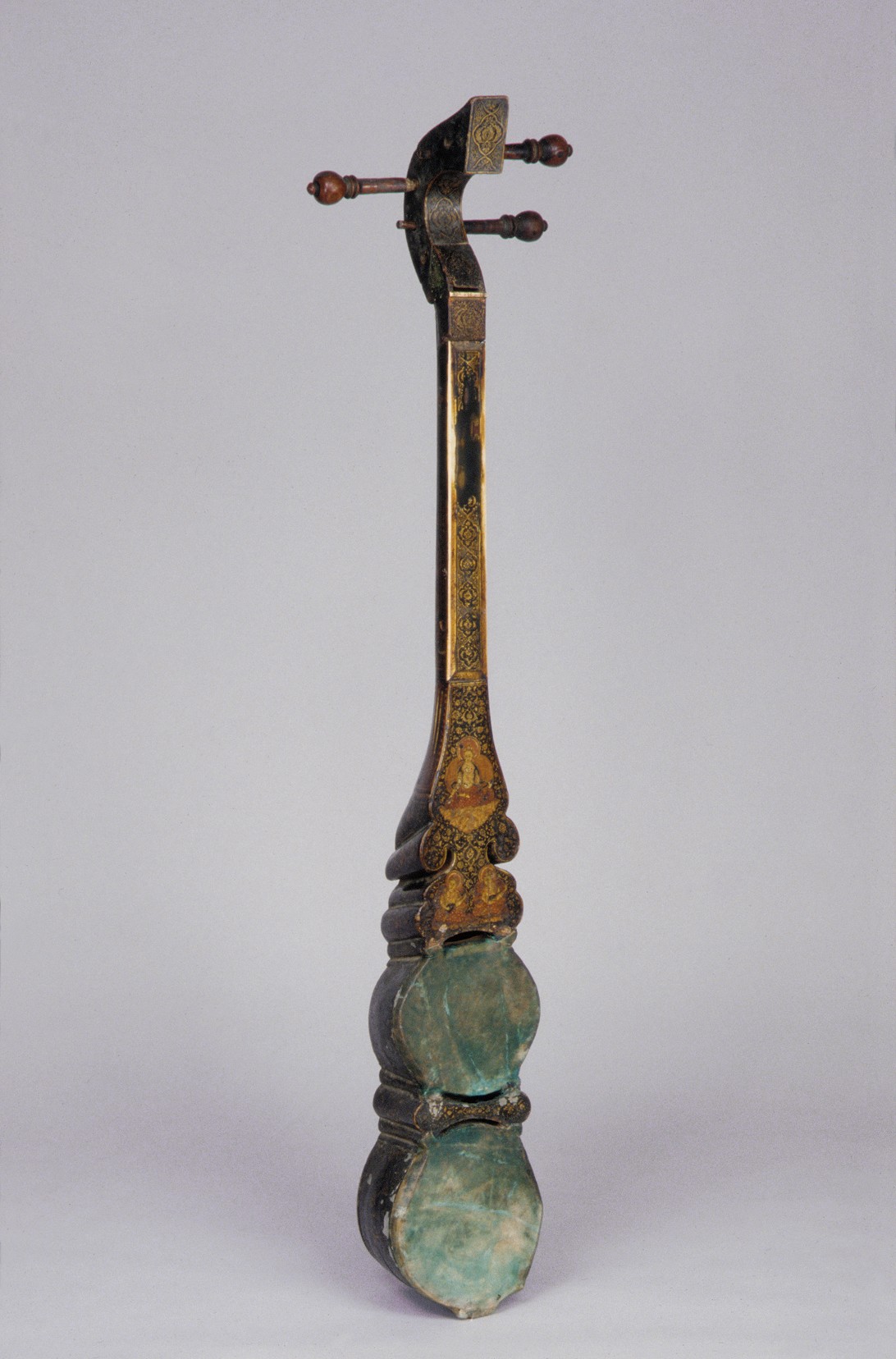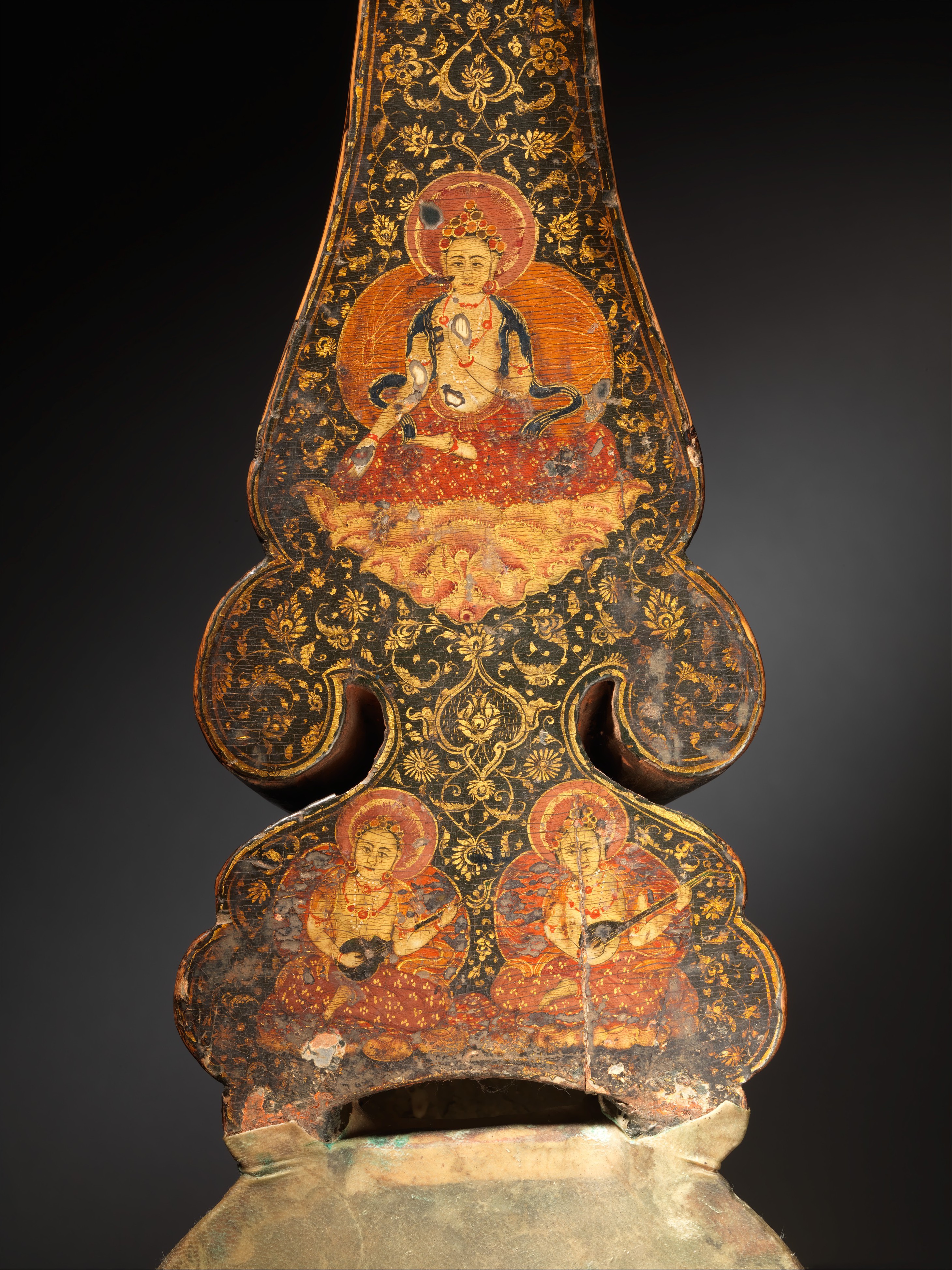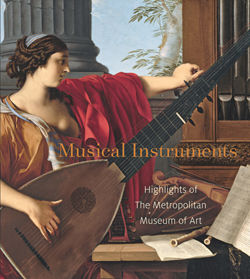Sgra-Snyan
The ancient "silk route", running from the Mediterranean to Sian in east central China, made Central Asia a meeting place of many cultures. This lute, an extraordinary example of musical exchange between East and West, is similar to instruments played by angels depicted in seventh-century Buddhist cave paintings. It offers some insight into the development of the modern sgra-snyan. The body, with two skin-covered chambers, is a rare example of an archaic transitional form that seems to point to the Afghan robab, and various Himalayan lute types. Decorative elements, such as green-colored skins, like those of the damarn, and the portraits of Buddha and musicians, rendered on painted ivory with gold leaf, are typical of fifteenth-century Tibet. The back, fingerboard, and pegbox reveal cartouches and palmettes reminiscent of seventeenth-century Persia. Tin leafing shows through as a silvery underlayer in a worn section of the instrument. Painted gesso adheres to the surface, the result of an ancient gilding process known as adoratura. Originally, there were six strings attached to this instrument, but the pegbox was shortened to accommodate five, with a possible sixth string attached to a side peg. Despite the appearance of Buddha and his musicians, the sgra-snyan was not used in religious settings, but accompanied secular song.
Due to rights restrictions, this image cannot be enlarged, viewed at full screen, or downloaded.
This artwork is meant to be viewed from right to left. Scroll left to view more.






